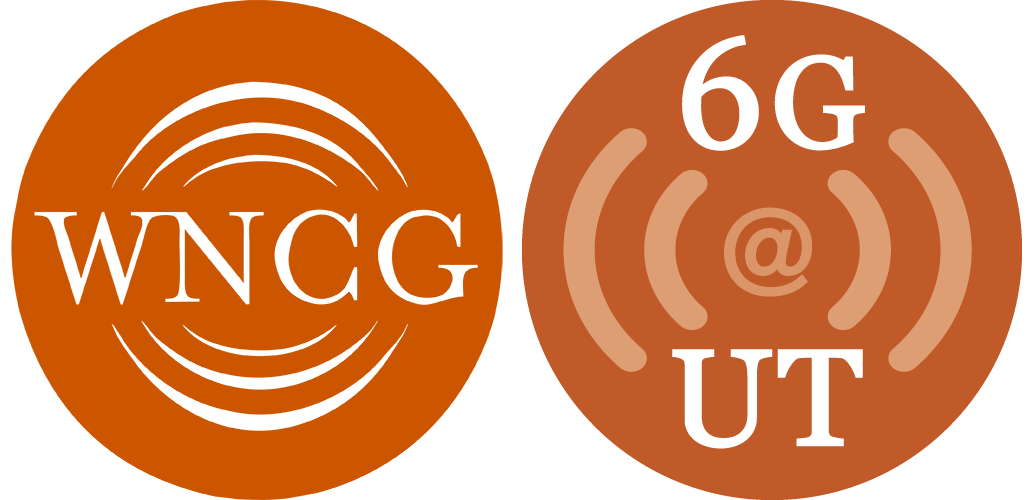
A new paper from 6G@UT provides a unique look at the emerging contours of 6G through an engaging “twenty questions” format. The article attempts to give an accessible overview of the driving factors, key technological advancements, and future requirements for 6G, with a particular focus on energy and cost efficiency, new service capabilities, spectrum management, and global connectivity. 6G@UT Director Jeff Andrews and WNCG Director Todd Humphreys were joined by Qualcomm’s 6G research leader Dr. Tingfang Ji as authors of the article. It’s too early to tell if it will become a universal reference like the 2014 WNCG paper “What will 5G be?”, but early indications are that paper is attracting considerable attention and garnering praise for its grounded, hype-free, and thoughtful analysis of the 6G landscape.
While 5G has made significant strides—selling over 2 billion smartphones and providing millions with home internet through Fixed Wireless Access (FWA)—it hasn’t yet lived up to its initial expectations. Industry sectors such as connected cars and smart factories have not been transformed as anticipated, and millimeter-wave (mmWave) technology, which promised ultra-fast speeds, struggles in indoor environments and requires expensive equipment. Additionally, high costs and energy consumption have made 5G rollouts more expensive for operators than anticipated.
The paper, also available here, highlights how 6G will address these challenges by emphasizing energy efficiency, cost reduction, and enabling new applications like pervasive sensing and AI-driven computing. These innovations will make 6G more affordable and scalable, and open new opportunities in industries like logistics, construction, and marketing.
A critical component of 6G will be its use of spectrum – the range of radio frequencies for wireless communication. While building on the existing 5G spectrum, the 6G network will also introduce new frequency bands—particularly in the 7-24 GHz range—to support higher data rates and improved efficiency. For high-speed, localized services, mmWave (above 28 GHz) will continue to play a role in dense areas like airports and stadiums. To ensure efficient service as the network grows, 6G will adopt advanced spectrum management techniques, including spectrum sharing and the use of reflective intelligent surfaces (RIS).
In the physical layer, 6G will leverage existing technologies like Orthogonal Frequency Division Multiplexing (OFDM) and its variant OFDMA for efficient data transmission. These waveforms are cost-effective, support high data rates, and can handle multiple antennas, making them ideal for high-speed communication. Innovations like full-duplex communication and advanced MIMO systems will further 6G’s ability to manage data at higher frequencies. Additionally, Machine Learning will optimize tasks such as beamforming, localization, and MIMO systems, ensuring 6G networks are faster, more reliable, and energy-efficient.
Another promising development is the use of Low-Earth Orbit (LEO) satellites to provide global broadband directly to smartphones through Direct-to-Cell (D2C) services. While D2C will not match the speeds of terrestrial broadband, it can offer reliable voice and text services, especially in rural areas where traditional networks are unavailable.
“Direct-to-phone connections from low-Earth orbit won’t offer broadband data rates like we currently get from terrestrial cellular, but it will be revolutionary nonetheless,” noted Dr. Todd Humphreys, one of the paper’s co-authors. “Even a 5 Mbps connection in the middle of nowhere is a huge technological feat, and will be very useful for customers who are camping, hiking, or just living beyond the reach of current networks.”
Current 5G and LTE phones can connect to these satellites without new standards, but future 6G technologies could unlock even greater potential, especially for larger beams or higher orbits. Additionally, High Altitude Platform Stations (HAPS) and Open Radio Access Networks (O-RAN) could enhance global connectivity, though HAPS may be limited to regional coverage, and concepts such as performance and security can present challenges to O-RAN.
6G is poised to overcome the limitations of 5G, offering a more efficient, globally connected, and powerful network that will drive innovation across industries and improve connectivity for users worldwide. While the official standardization process won’t begin until late 2025, the insights shared in this article are grounded in years of in-depth research and ongoing discussions. As we move toward the 6G era, these predictions aim to provide valuable guidance for both researchers and engineers shaping the future of wireless communication.

